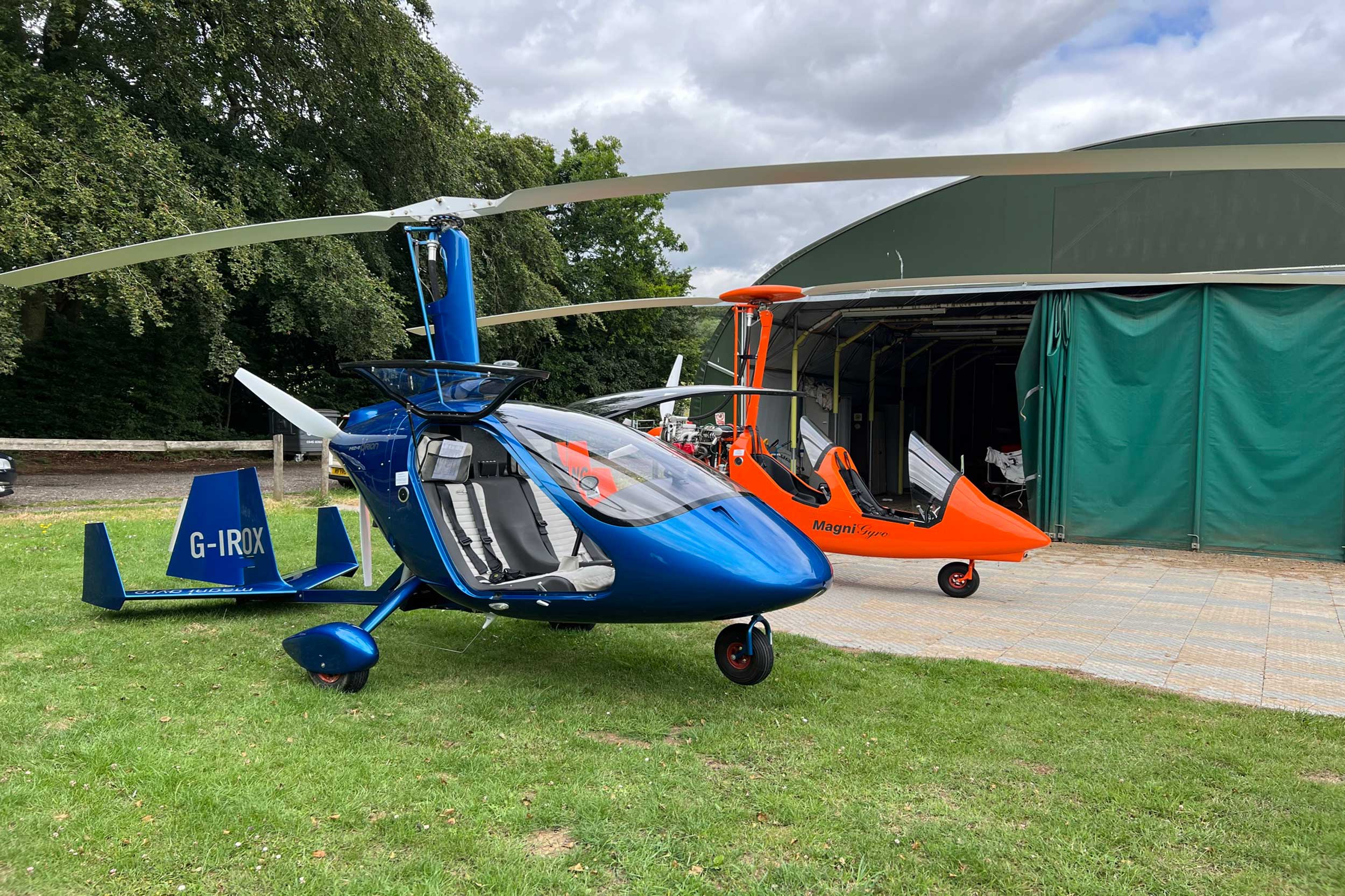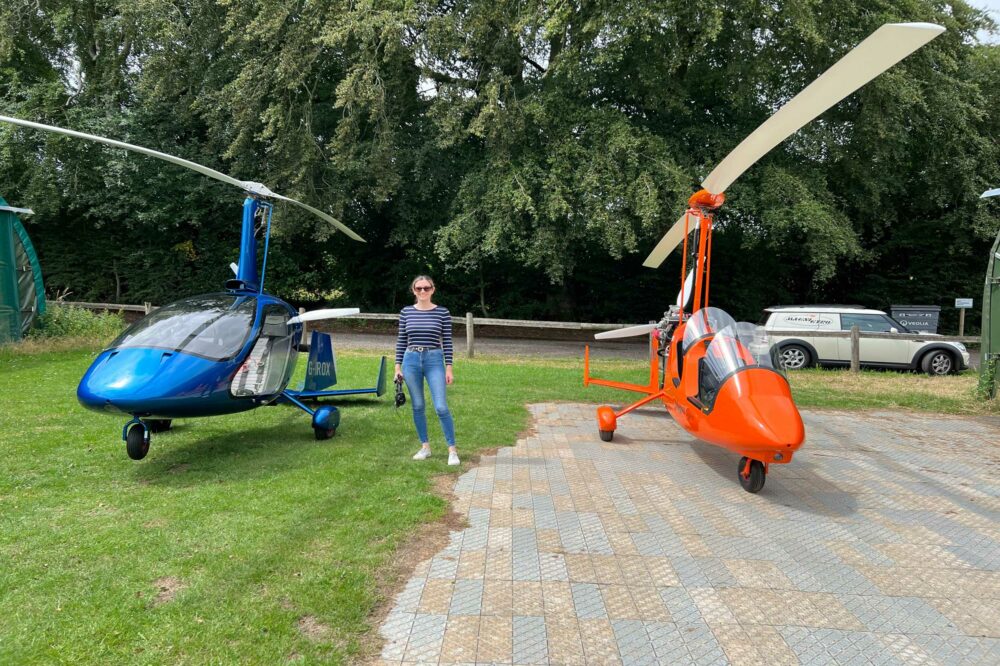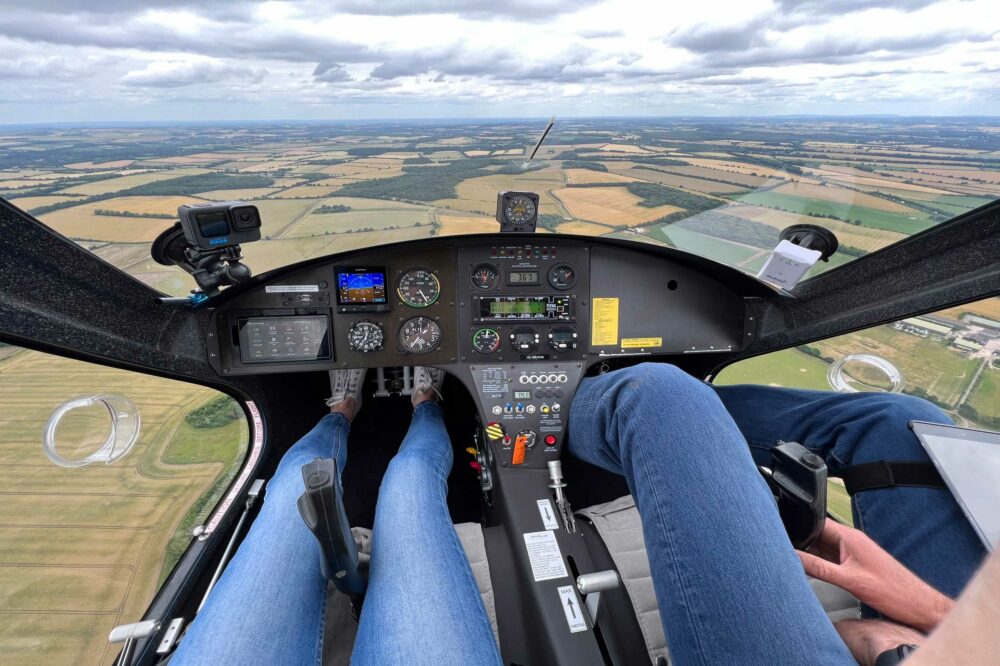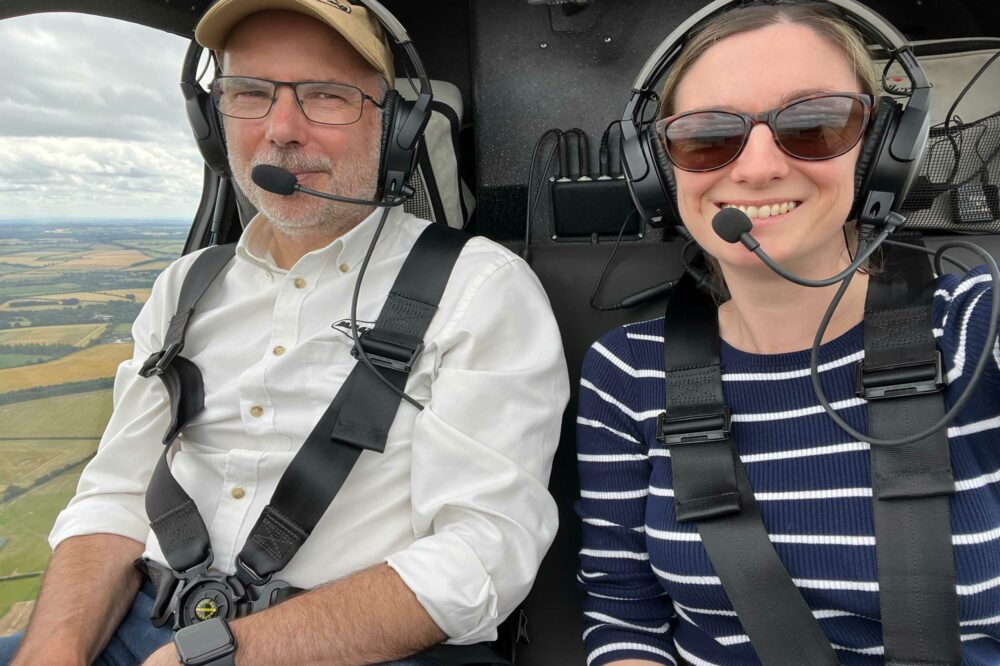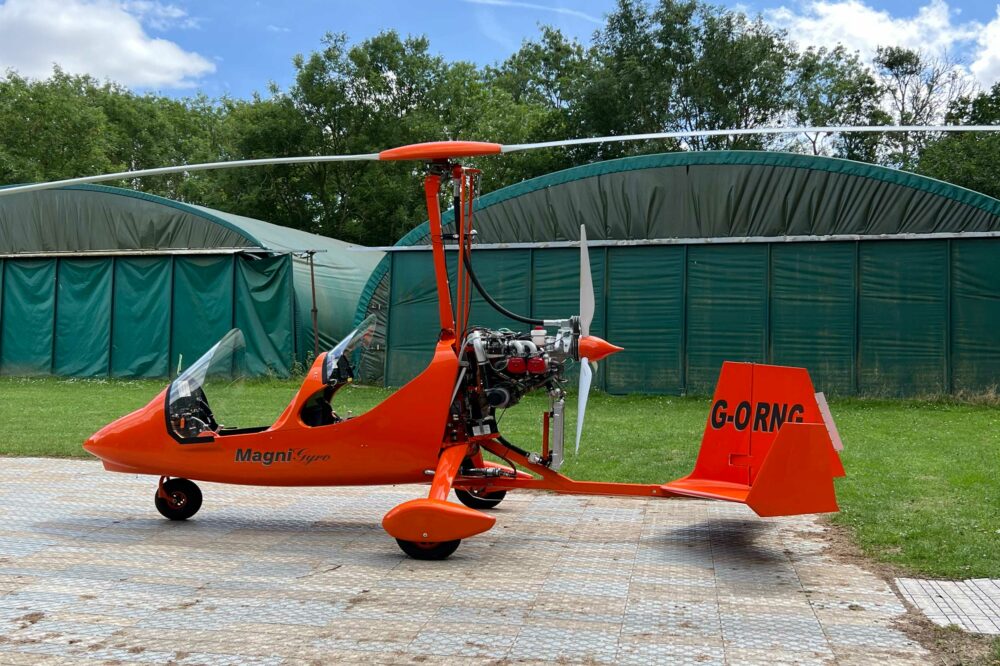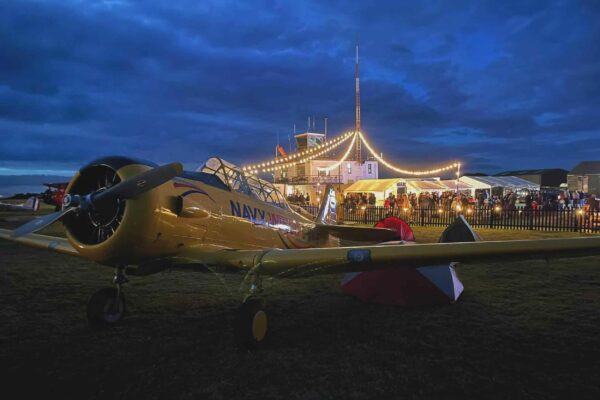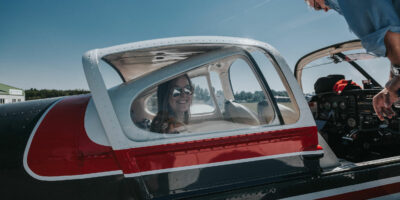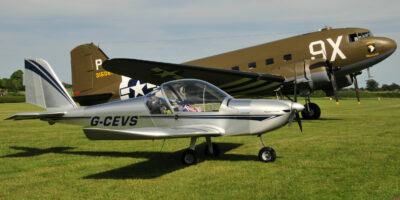After lunch, it’s the turn of the open cockpit Magni M16, which, according to the Magni promo material, is the company’s best-seller. It has tandem seating and requires the wearing windproof gear and helmets, which I find somewhat unflattering, so it loses a point…
Like other forms of open cockpit aviating, it feels a very raw form of flying, exposed to the elements and free as a bird. With a relatively low cockpit ledge separating me from the ground, I expected to feel nervous, but I find I feel enclosed enough to feel secure even when Steve demos some ridiculously tight turns.
The same is true when he performs a 360° descending turn on short final – a ‘confined area approach’, which is a great way to lose height rapidly while maintaining energy. Not something you’d ever do in a fixed-wing or helicopter! We do a couple more circuits so that I can have a go at some more landings, and these are as smooth and easy as the first.
I’ve come away with the conclusion that gyros are neither the best nor the worst of both worlds – they’re in a world of their own. Personally, in view of my limited budget, I would use an aeroplane to go from A to B, and a helicopter for short, special hops to hotels and other nearby off-airfield sites.
The gyro is slow, so not ideal for long distances, and although you can get it into microlight strips, you’re basically limited to airfields when you use it for days out.
But it comes into its own for the pure joy of flying… so I am happy to hold my hands up and admit it… I was wrong.


